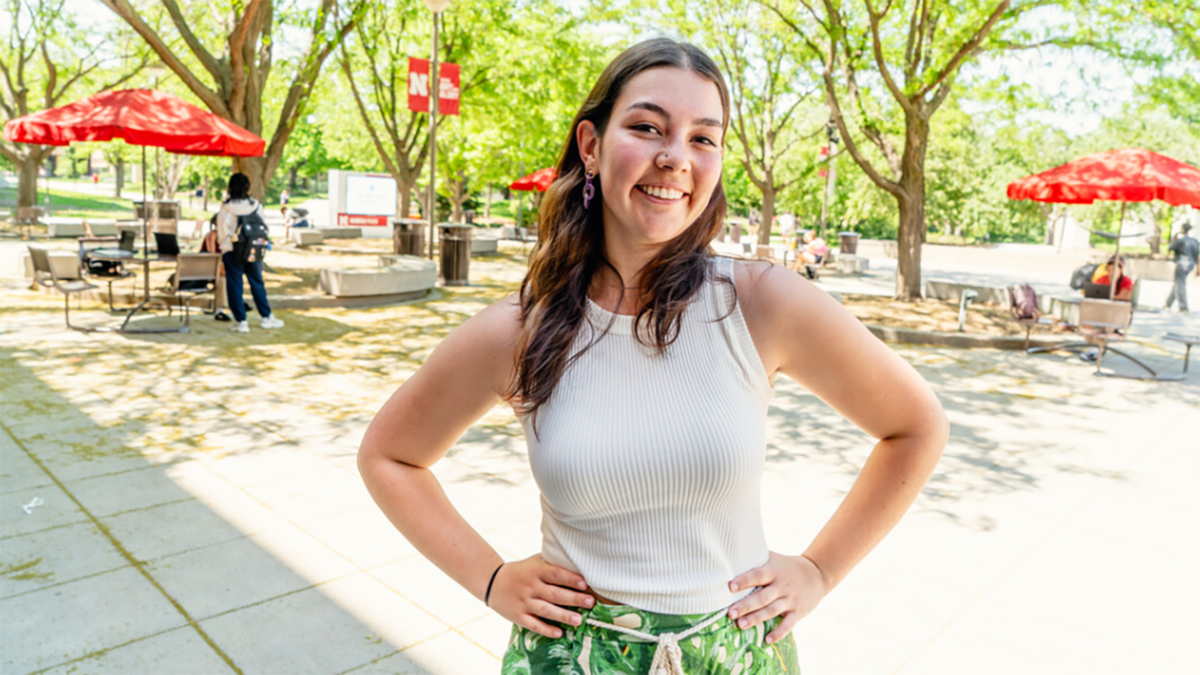
Staff at the Nebraska Statewide Arboretum and National Park Service collaborated with a community group in Chadron, Nebraska, to aid them in realizing their vision of becoming a trail town. Brad Kindler, sustainable landscape specialist with the arboretum, said the partnership connects communities and expertise.
“We’re filling a niche in design services that is oftentimes unavailable to small communities who are interested in these types of projects, because a large design firm might be cost prohibitive,” Kindler said. “It’s a great opportunity for us because we get to grow our network and understand our communities better, but it’s also good for small communities because they get a professional design service that gives them something that’s actionable at the end of the process.”
The Northwest Nebraska Trails Association, a volunteer group in Chadron, accessed the assistance through the Rivers, Trails and Conservation Assistance program of the National Park Service, which connects communities with technical assistance in planning and design. The National Park Service brought in the Nebraska Forest Service’s Sustainable Landscape Program to co-facilitate the process through a cooperative agreement.
As part of a public-private partnership with the University of Nebraska–Lincoln, the Nebraska Statewide Arboretum facilitates a network of more than 100 arboretums and public gardens in dozens of communities across the state that demonstrate regionally appropriate landscape sustainability.
Kat Shiffler, landscape architect with the National Park Service, said the program provides professional services to communities that might not have paid staff working on these types of long-term planning and design projects.
“We like to work at the beginning of the process on concept design and big picture goals, and when it comes to construction and implementation, that community is ready to go,” she said. “They can hand this planning document over to a private design firm to do some of the specifics.”
Over the past year, Kindler and Shiffler facilitated a strategic planning process with the trails association, as well as a public feedback session to develop a plan to highlight and improve the area’s trails. Ideally, this will be part of a larger project to complete and connect the Cowboy Recreation and Nature Trail to downtown Chadron.
“They were very excited about the trails that currently exist in Chadron,” Kindler said. “There’s lots of really great trail infrastructure, but connecting those spaces is what is important.”

Brittany Helmbrecht, president of the Northwest Nebraska Trails Association, said the group wanted to prepare for the future but were seeking professional guidance. She said Kindler and Shiffler’s expertise helped propel the project forward.
“We’re all enthusiasts, but trail planning is not on any of our resumes,” she said. “They understood what we wanted to get out of it. I don’t think we could have achieved all that we’ve achieved without their support and help. Sometimes we take trails for granted because it seems so easy, but there’s so much that goes into it.”
The group identified a set of priorities: connecting existing trail systems, fostering a trail culture and building on their network of community support. This included proposals for an “arrival experience” gateway to the town and trailside landscape designs.
“We put it in a coherent framework for them to have actionable bullet points moving forward,” Kindler said. “They’re starting to tease out assets and challenges they find in Chadron.”
Shiffler said they used conversations with the community members to learn about the community’s vision and offer them practical guidance on how to achieve it. This allowed them to create a plan that reflected their home.
“When there are visitors coming through your town, what do you want the experience to look like?” Shiffler said. “This is a starting point to think about how to present their culture and design a new space that would be appropriate based on what we know about them.”
The team collaborated with members of the community during a series of workshops, open houses and meetings with parks officials from other towns who have completed similar projects. Through these conversations, they learned about, for example, areas of town with the greatest opportunities for development of new and improved paths and pieces of the town’s history they could highlight.
“We talked about where the places are they could improve in town for cyclists and pedestrians,” Shiffler said. “What we wanted to hear from community members was, ‘Are these priorities for you?’ Chadron is a college town, so we intentionally incorporated student ideas into this process. They gave us their ideas about where students walk and bike in town and what they’re seeing as far as preferred routes to get from campus to important places.”
The final report gives the community a comprehensive vision they can carry into the next phase of planning. The group has already completed a “walk audit,” walking all proposed routes to identify best options for new and improved pedestrian infrastructure.
“This is something they can put down in front of their city council, in the hand of a landowner they may want to talk with about access,” Kindler said. “This is an important visualizing document to bring people in their community together and get them on the same page.”
The work also builds a foundation as work on the trails goes from the page to reality.
“We’re hoping that conversation can continue and be directly related to (the Nebraska Statewide Arboretum’s) role in the state of proposing and planting the right tree in the right place,” Shiffler said.
Helmbrecht said the group valued gathering input from a range of stakeholders to maximize community buy-in as the ideas become reality.
“It was important for our community to see not only are we moving forward on it, but the reality that … our vision for a ‘trail town’ is closer than it ever has been before,” she said.







